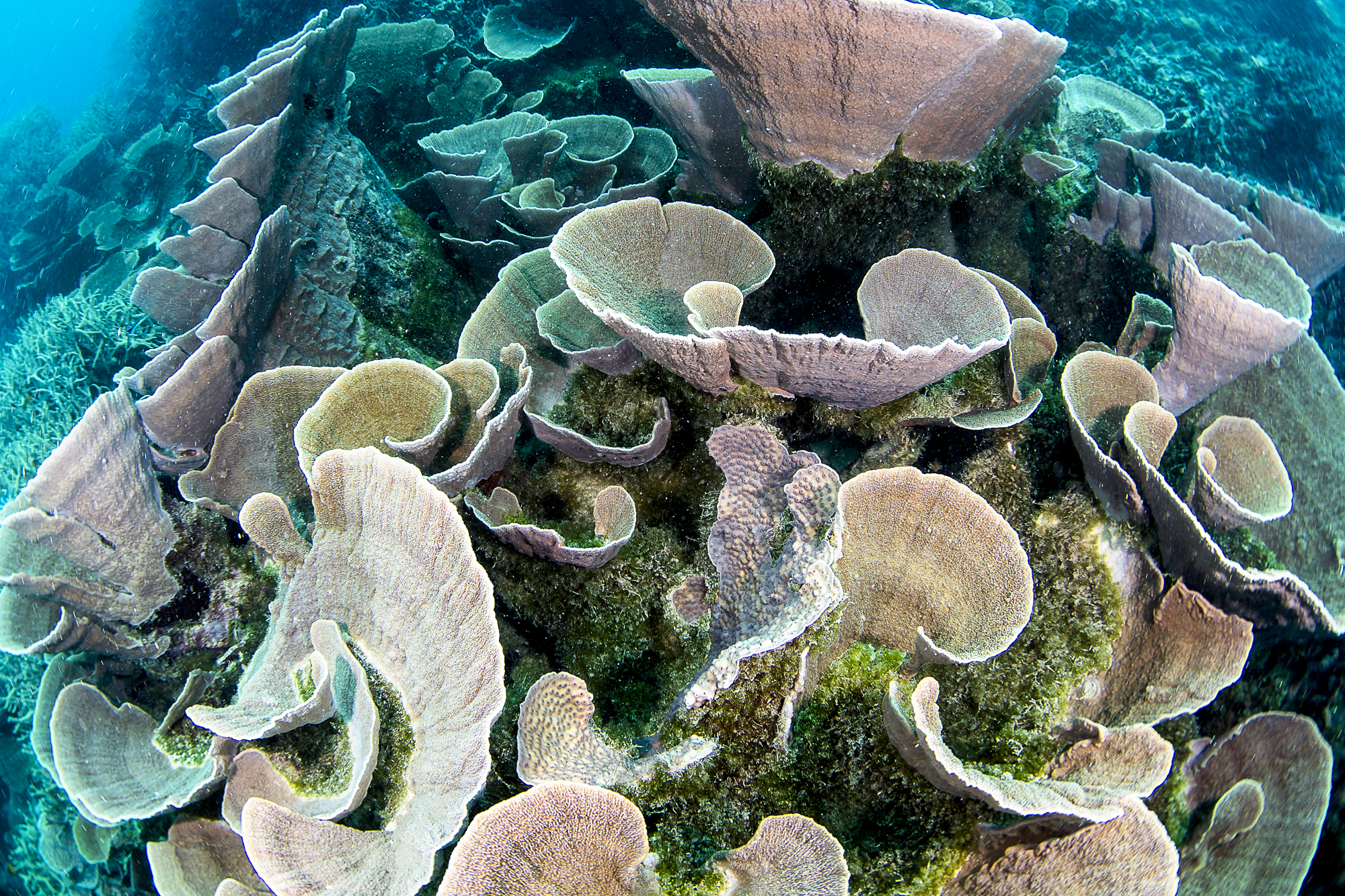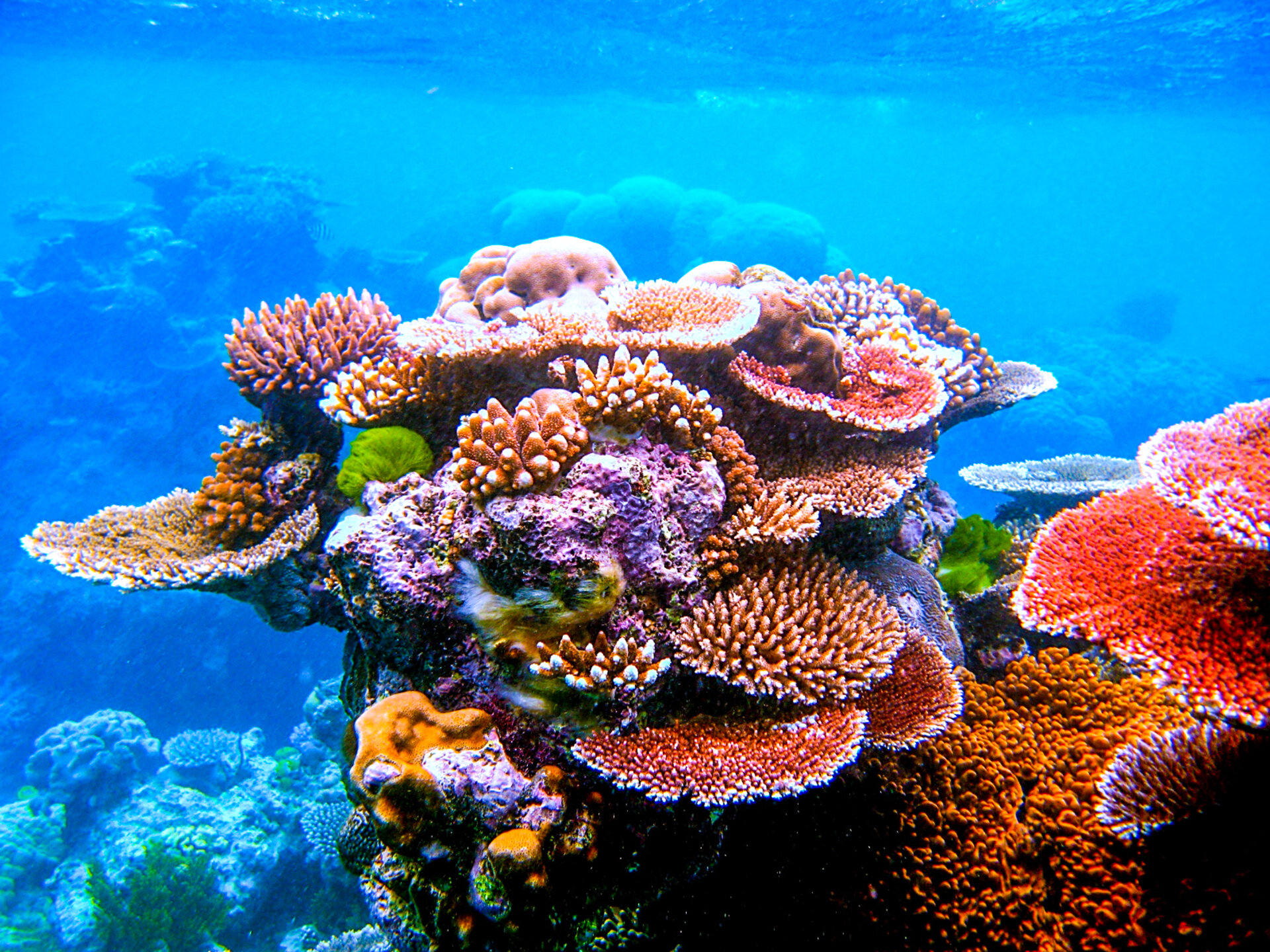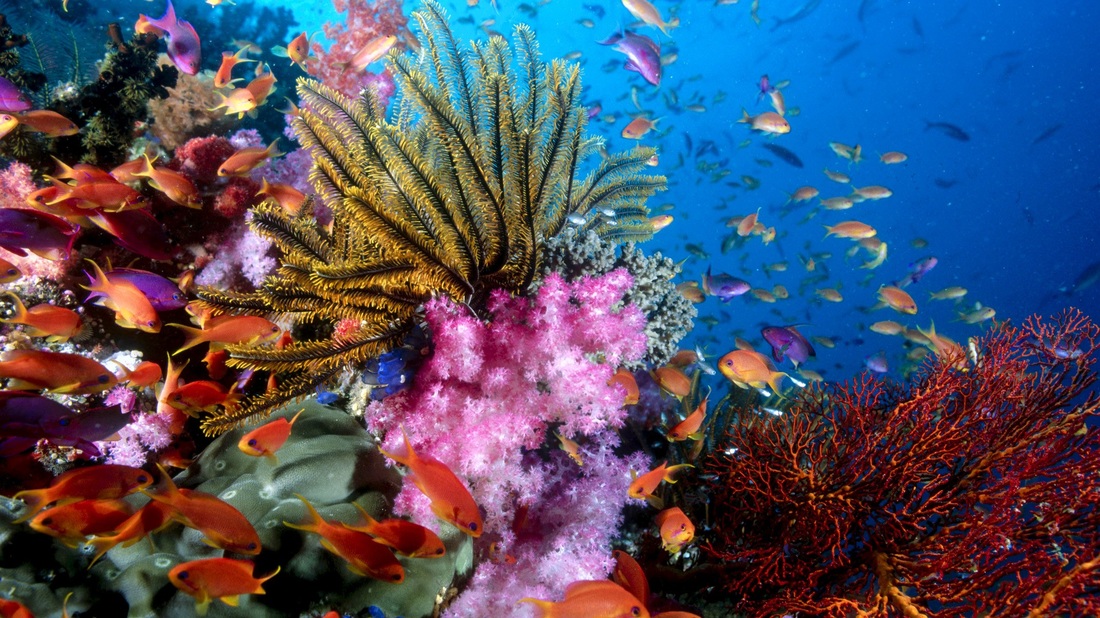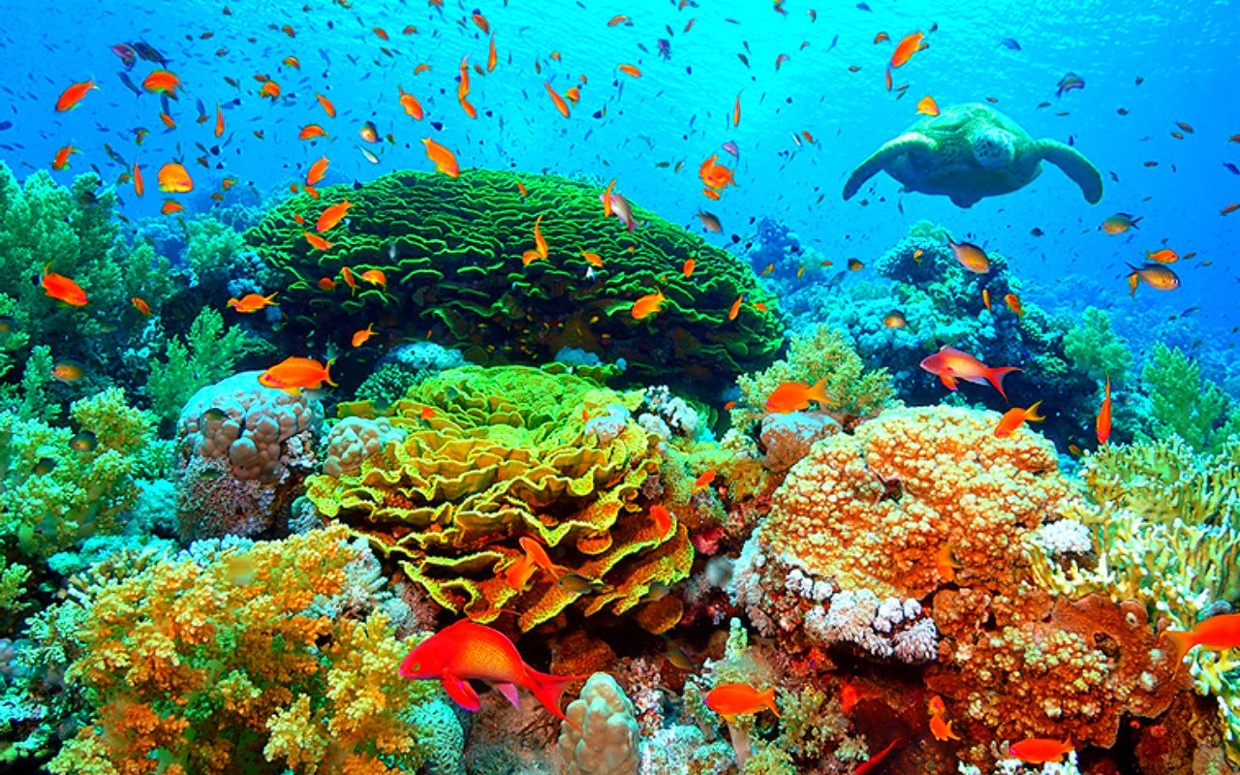
Great Barrier Reef Tour Frankland Islands Dive & Snorkel Tour
The Great Barrier Reef is the largest living structure on Earth. It provides habitat for nearly 9,000 species of marine life—and that's just the (relatively) easy to count ones! The reef's rich biodiversity helps it to maintain a stable and healthy coral reef system. Another way to look at biodiversity is from the perspective of the.

Nearly 200 Great Barrier Reef coral species also live in the deep sea
5. Sea grapes. Next, for the plants in The Great Barrier Reef is sea grapes. This plant has a scientific name of Coccoloba uvifera and people also known this plant as baygrape. Sea grapes can live until 100 m depth and usually live in the muddy areas. Usually this plant will live adjacent the coral reef. See also:

Great Barrier Reef Coral Reef In Queensland Australia Ocean Tropical Animals Pisces Plants
The Great Barrier Reef has held World Heritage status since 1981.. It is one of the most biodiverse ecosystems in the world - marine and plant life teems within the coral structures.

17 Plants In The Coral Reef Herb Garden
Native plants of Great Barrier Reef Coast Marine Park. Total number of species: 5904. Download this information in .CSV format.

The Greatest Reef on Earth • Scuba Diver Life
The Great Barrier Reef stretches more than 1,600 miles (2,575 kilometers) — a little more than the distance from Boston to Miami. It covers an area of 133,000 square miles (344,400 square km.

Good News! 9 Positive Environmental Stories from April One Tree Planted
The Great Barrier Reef is a site of remarkable variety and beauty on the north-east coast of Australia. It contains the world's largest collection of coral reefs, with 400 types of coral, 1,500 species of fish and 4,000 types of mollusc. It also holds great scientific interest as the habitat of species such as the dugong ('sea cow') and.

ESA The Great Barrier Reef is home to hundreds of types of coral
The Great Barrier Reef has a very wide range of underwater vegetation. Some examples of some sea vegetation include true plants which are mangroves and sea grasses and coral reef algae which is seaweed. Sea grasses - there are 15 different species of grasses. They are grown in shallow water where sunlight can reach them. 1 square meter of sea.

'Coral IVF' to restore Australia's Great Barrier Reef World Economic Forum
The Great Barrier Reef is home to a diverse range of plant life, including seagrasses, algae, and mangroves. These plants play an important role in the reef ecosystem, providing food and habitat for a variety of marine animals. The health of these plant communities is critical to the overall health of the reef, as they help to maintain water quality and protect against erosion.

Coral delight Great barrier reef, Plants, Coral
The Great Barrier Reef is one of the most biodiverse ecosystems on earth, and it is home to over 1,500 species of fish, 400 species of coral, and thousands of other plants and animals. It is a popular destination for scuba diving, snorkeling, and other aquatic activities, and it is also an important economic and cultural resource for Australia.

Great Barrier Reefs Plants Plants BB
The Great Barrier Reef, located off the north-eastern coast of Australia, is home to a variety of vegetation. The most prevalent type of plants is sea grasses. It also contained various types of algae such as seaweed, which are not true plants at all. Mangroves, which are actually terrestrial plants that grow above the surface of the sea but.

Great Barrier Reef Great barrier reef, Townsville, Reef
The Great Barrier Reef, which extends for over 2,300 kilometers (1429 miles) along the northeastern coast of Australia, is home to over 9,000 known species.There are likely many more—new discoveries are frequently being made, including a new species of branching coral discovered in 2017. This richness and uniqueness make the reef crucial for tourism and the Australian economy—it attracts.

Pin by Laura Matthews on ocean inspiration Sea plants, Great barrier reef, Hard coral
Seagrass is the world's only flowering plant that can live underwater. It's often confused with seaweed but, like most plants, seagrasses have roots, stems and leaves and produce flowers, fruits and seeds.. call our Reef home, growing in a variety of coastal, estuarine, reef and deep-water habitats. Seagrass meadows on the Great Barrier.

flora The Great Barrier Reef
The Great Barrier Reef is the world's largest coral reef system,. The islands of the Great Barrier Reef also support 2,195 known plant species; three of these are endemic. The northern islands have 300-350 plant species which tend to be woody, whereas the southern islands have 200 which tend to be herbaceous; the Whitsunday region is the.

Luxury Great Barrier Reef and Northern Queensland Tours, Private & Tailormade Jacada Travel
The Great Barrier Reef relies on its biodiversity, from the animals, plants and algae to the micro-organisms too small for the eye to see. It's this biodiversity that builds such a remarkable ecosystem, as well as supports human use of the Great Barrier Reef.. Great Barrier Reef contains highly diverse mangroves, which represent 50 per cent.

Great Barrier Reef, Australia Great barrier reef, Underwater, Beach
Great Barrier Reef, complex of coral reefs, shoals, and islets in the Pacific Ocean off the northeastern coast of Australia that is the longest and largest reef complex in the world. The Great Barrier Reef extends in roughly a northwest-southeast direction for more than 1,250 miles (2,000 km), at an offshore distance ranging from 10 to 100 miles (16 to 160 km), and its width ranges from 37 to.

Facts about the Coral Reef Biome
The Wet Tropics has one of the largest cycads, at 65ft tall, and one of the smallest cycads in the world. Ferns appeared in the fossil record dating back to 325 million years ago. They are one of the earliest plants to circulate water internally; known as vascular plants. The Wet Tropics is home to 65 per cent of Australia's fern species.